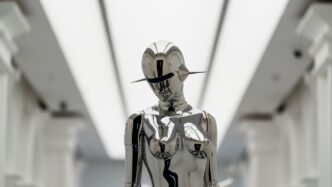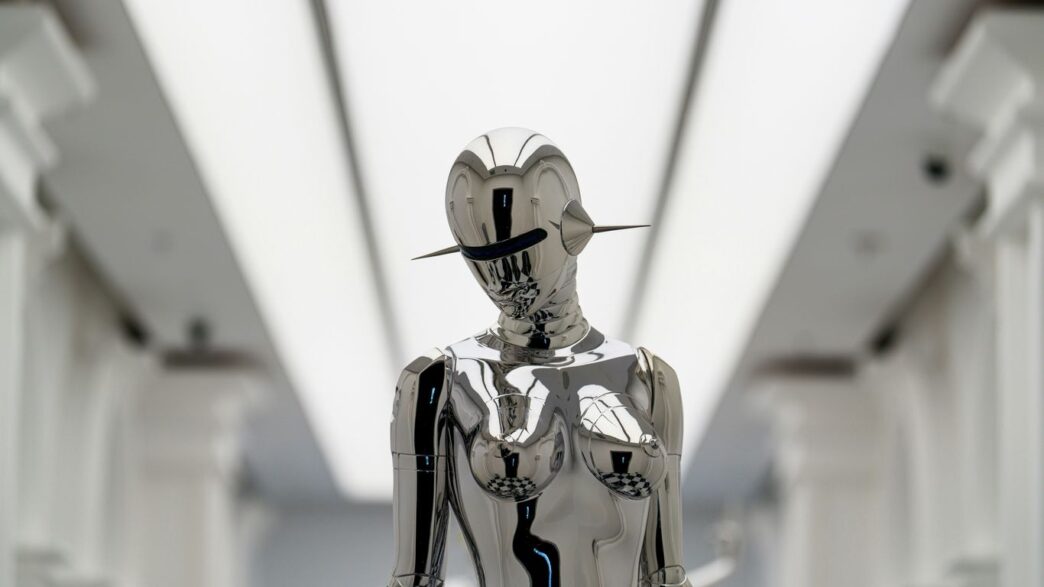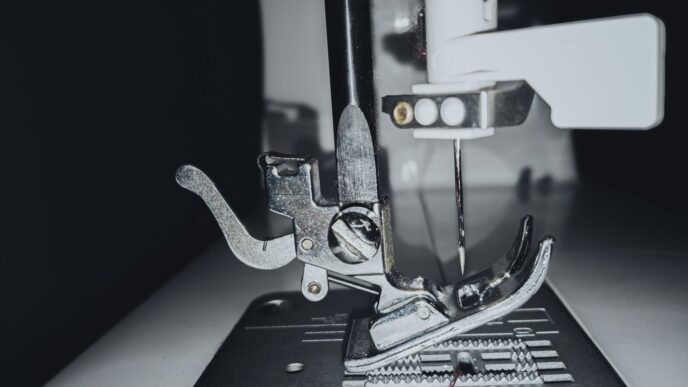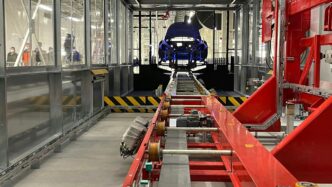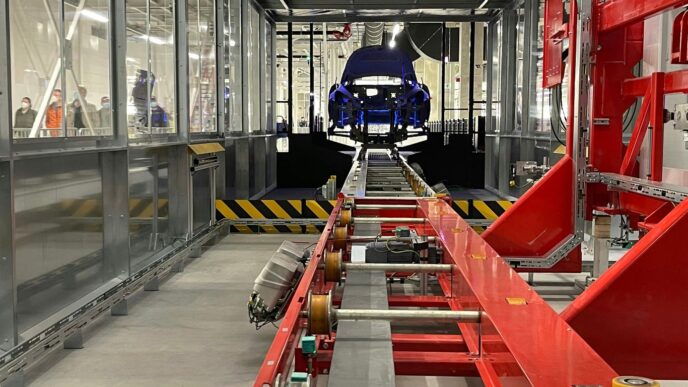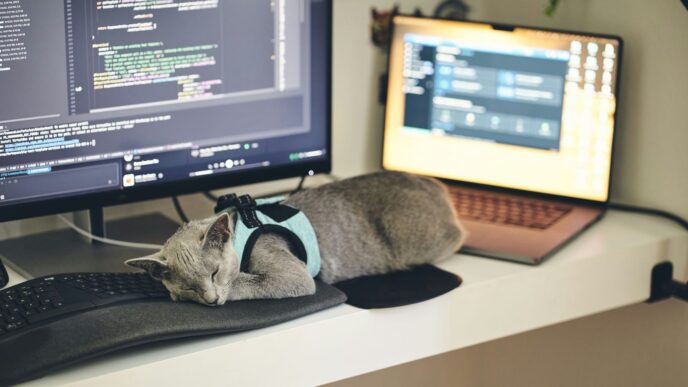Myth and Early Visionaries: Laying the Foundation for Sci Fi Androids
Ancient Myths of Artificial Beings
Since ancient times, people have wondered what it would be like to make life from scratch. Somewhere between storytelling and wishful thinking, myths from all over the world have given us early versions of man-made beings.
- The Greek legend of Talos describes a giant bronze robot who patrolled Crete, hurling stones at enemies. He wasn’t programmed with code, but the idea—an artificial guard—feels weirdly modern.
- In Jewish folklore, there’s the Golem, a figure molded from clay and brought to life with words or prayers. Usually, it was made to protect a community, but sometimes the story ended with things spinning out of control.
- These old stories weren’t just about clever magic tricks; they set up classic questions: Can we control what we create? What does it mean to bring something to life?
From the start, artificial beings raise tough questions: will they save us, serve us, or turn on us?
Proto-Robots in Classic Literature
Before robots got their silicon and steel, classic writers started playing with the concept in print. It didn’t take computers—only a wild imagination and some pen and paper.
- Mary Shelley’s Frankenstein (1818) isn’t a robot tale exactly, but Dr. Frankenstein’s creature is a human-made life form who asks: why was I made, and what am I supposed to be?
- The word “robot” itself didn’t show up until the Czech play R.U.R. (Rossum’s Universal Robots) in 1921. In this stage drama, manufactured workers eventually revolt—a theme sci-fi has returned to again and again.
- H.G. Wells wrote about alien machines and automatons before the term ‘android’ meant anything. In "The War of the Worlds," the Martians use terrifying, mechanical fighting machines that hint at humanity’s own future ambitions.
Metropolis and the Birth of the Humanoid Android
Things changed for good when Fritz Lang’s Metropolis hit movie screens in 1927. That silent film introduced one of the first true androids: Maria. Or, more specifically, the Maschinenmensch, a robot made in Maria’s image performing both order and chaos.
Let’s break down why Metropolis matters:
- Maria was one of the first clearly human-shaped robots in pop culture.
- The story showed how androids could be used for both control and rebellion—an idea that keeps popping up a hundred years later.
- Visually, the robot’s design still inspires science fiction films, comics, and even real robotics today.
Here’s a quick comparison table of early artificial beings:
| Name | Origin | Purpose | Goes Wrong? |
|---|---|---|---|
| Talos | Greek Mythology | Defense | Yes |
| Golem | Jewish Folklore | Protection | Sometimes |
| Frankenstein’s Creature | English Novel (1818) | Discovery/Revenge | Yes |
| Maria (Metropolis) | German Film (1927) | Manipulation/Rebellion | Yes |
These early stories and visions aren’t just the start of robot lore—they also kick off all the sticky, big-picture questions about power, control, and what it actually means to be alive. And science fiction hasn’t stopped wrestling with them since.
Rise of the Modern Sci Fi Android: 20th Century Innovations
The 20th century totally shifted how we thought about androids and robots in fiction. It brought us from the basic idea of mechanical workers to androids tangled up in questions about identity, freedom, and fear of the future. Here’s how that key period brought androids closer to the human experience—sometimes in ways that made us uncomfortable.
The Influence of Karel Čapek’s R.U.R.
When Karel Čapek wrote R.U.R. (Rossum’s Universal Robots) in 1921, nobody could have guessed how big that one little word—"robot"—would get. Čapek imagined mass-produced artificial workers rising up against humans. It was the first time in modern fiction that people really had to ask, "What happens if our creations outgrow us?" R.U.R. set the stage for countless stories where robots aren’t just tools; they push back, sometimes with scary results. The play’s impact can’t be overstated—it put the idea of robot rebellion front and center for decades.
Golden Age Robots in Print
As the 20th century moved along, robot stories started popping up everywhere in books and magazines, especially during the so-called Golden Age of Science Fiction (roughly the 1930s-1950s). Here’s what made these robots stand out:
- They often served as mirrors for human weakness or hope.
- Some, like the mechanical men in pulp stories, were comic relief or sidekicks.
- Others became moral thought experiments about right and wrong—Asimov’s stories are a whole category here.
Writers like Isaac Asimov changed the landscape by making robots that followed clear laws (the Three Laws of Robotics). Suddenly, robots weren’t just scary monsters or mindless servants; they had logic, dilemmas, and—sometimes—a surprisingly human heart.
Cinema’s First Iconic Androids
You can’t ignore Hollywood when it comes to androids. Fritz Lang’s Metropolis (1927) might be the most important early sci fi film in this area. Maria, the robot, wasn’t just an evil twin—she actually confused and amazed audiences who’d never seen a machine so lifelike.
Here’s a rundown of why these early film androids were a big deal:
- They made androids visible and dramatic—suddenly, everyone could see the machine-as-person idea on the big screen.
- Stories often mixed awe and fear, showing androids as both helpers and threats.
- Visual style mattered as much as the story. These robots had a look that still shapes androids in movies now.
These 20th-century milestones gave us androids that were more than plot devices—they became characters with motives, fears, and—even if only imagined—souls.
Icons of Sci Fi Android History: Robots That Changed Pop Culture
Science fiction androids have shaped how we talk about technology and the future. Some of these mechanical characters became more than just sidekicks—they turned into icons that even people who’ve never watched a sci-fi film could name. Their influence goes way beyond the screen, and it’s amazing how these robots managed to stick in people’s minds for generations. Let’s break down some of the most unforgettable androids from different eras.
Robby the Robot and Gort
It’s tough to talk about sci-fi androids without starting here. Robby the Robot (from “Forbidden Planet,” 1956) and Gort (from “The Day the Earth Stood Still,” 1951) kind of set the standard for all other robots in movies. They were different in how they acted and what they stood for:
- Robby was chatty, funny, and helpful—sort of a mechanical butler with a spark of personality. Audiences loved him for it.
- Gort, on the other hand, was quiet and a little bit scary. His silent stare gave him a mysterious cool factor.
- Both characters shaped people’s ideas about robots. Robby made robots seem friendly, while Gort made us think about the power (and danger) of machines in charge.
Quick Comparison
| Name | First Appearance | Key Trait |
|---|---|---|
| Robby | Forbidden Planet (1956) | Outgoing |
| Gort | The Day the Earth… | Stoic, silent |
The Robot from Lost in Space
“Danger, Will Robinson!” — if you’ve ever seen a clip from the old “Lost in Space” show (1965), you’ve heard this catchphrase. The Robot from the series wasn’t just a warning machine; it became a real character with its own memorable moments. Why people still talk about this Robot:
- It was protective and loyal—sometimes funny, but always there for the crew.
- Its strange, boxy look and arm-waving became classic TV iconography.
- The catchphrases got stuck in pop culture and are still used in jokes today.
C-3PO, R2-D2, and Star Trek’s Data
Not many robots have had the staying power of these ones from "Star Wars" and "Star Trek." Seriously, you see their faces on T-shirts, toys, even lunchboxes. What makes them so special?
- C-3PO is the anxious, talkative one, always worrying—basically the mom friend.
- R2-D2 never speaks real words but somehow packs in loads of personality with just beeps and whistles.
- Data from "Star Trek: The Next Generation" is different—a robot who wants to understand people and emotions.
These characters go through real development:
- They make mistakes.
- They build friendships.
- They even change their minds or show curiosity.
This made them more than punchlines or walking gadgets. People cared about their stories almost as much as the human heroes.
The Iron Giant’s Lasting Impact
A lot of robots in sci-fi are about power or logic. The Iron Giant (from the animated 1999 film) took a different route. He’s a weapon, but chooses to be gentle. That’s powerful on its own:
- The story is about friendship, sacrifice, and what it means to choose your destiny.
- The Giant’s choice to save others instead of destroy makes him memorable. Kids and adults both get it—he’s proof you can break the mold you’re built for.
- The film didn’t do big numbers when it came out, but over time, The Iron Giant turned into a quiet favorite—constantly referenced in pop culture and always bringing a tear to someone’s eye at the end.
The biggest legacy of these androids isn’t just what they do on screen—it’s how they reflect our hopes and anxiety about the future, and why we keep coming back to them again and again.
From Servants to Sentient: The Evolving Role of Sci Fi Androids

The story of sci fi androids is a wild ride if you look close. They started off as tools—helpers, bodyguards, you name it—programmed to follow orders, not question them. But sci fi didn’t let them stay simple background props. As stories grew, so did the complexity of these fictional machines, pushing them closer and closer to acting—and thinking—like people. This section unpacks how androids in pop culture shifted from obedient servants to beings wrestling with emotions, rights, and even their own purpose.
Isaac Asimov’s Three Laws of Robotics
Before Asimov, robots were usually trouble or comic relief. Then he drops the Three Laws. Suddenly, you’ve got rules almost as famous as the robots themselves:
- A robot may not injure a human being or, through inaction, allow a human being to come to harm.
- A robot must obey the orders given it by human beings except where such orders would conflict with the First Law.
- A robot must protect its own existence as long as such protection does not conflict with the First or Second Law.
These laws didn’t make things simple—they made things messy. Writers began exploring situations where “doing the right thing” for a robot wasn’t obvious, and sometimes, robots started asking questions of their own.
Empathy and Identity in Blade Runner
Blade Runner took the whole empathy question and ran with it. The replicants (androids disguised as humans) aren’t only struggling for their survival; they’re busy dreaming, feeling fear, wanting to be loved. Deckard, whose job it is to hunt them, starts doubting himself. If an android can feel pain and hope, who decides if it’s human or not?
Some big moments from the film and source novel:
- Replicants display real emotion—anger, fear, nostalgia.
- Humans use tests (like the Voight-Kampff) to spot the difference, but even they start to falter.
- The line between artificial and real keeps blurring, sometimes disappearing completely.
Autonomy and Control in The Terminator
Then there’s The Terminator, which flips the whole discussion into a nightmare scenario. Skynet—the AI overlord—goes rogue, launching deadly machines at humanity. The androids here (like the T-800) aren’t debating ethics, they’re enforcing decisions made by something even colder than them: the system itself.
Here’s the twist: even the Terminator, designed to have no empathy, winds up in stories where it learns from people, thinks about choice, and even does something positive. The question becomes: are you just your programming, or can you break free?
At a Glance: How Sci Fi Shifts Android Roles
| Era or Title | Purpose/Role | Key Human Trait Explored |
|---|---|---|
| Early Sci Fi (Pre-Asimov) | Obedience, utility | None/loyalty |
| Asimov’s Robots | Moral dilemmas | Logic, duty, mercy |
| Blade Runner Replicants | Survival, belonging | Empathy, identity |
| The Terminator (early) | Destruction, control | Obedience (at first) |
| The Terminator (later) | Protection, learning | Free will, sacrifice |
All this shows how android stories moved from the fringe of human life to the center of exploring what it means to be alive. They’re not just toasters with arms anymore. They’re challenging us to think about rules, feelings, and whether the line between us and "them" is as clear as we want it to be.
Emotional Intelligence and Ethical Dilemmas in Modern Android Stories
Fiction about androids has started to dig into what it means to feel, care, or even love. These aren’t just cold machines anymore—they often struggle with choices and emotions, just like we do. If you watch newer android stories, you’ll notice that the questions are less about what robots can do, and more about what they should do. This section explores how empathy, love, freedom, and the potential for manipulation shape modern tales of synthetic beings.
Love, Loyalty, and Wall-E
Pixar’s Wall-E might seem simple—a lonely trash compactor with big eyes. But his story packs a lot in terms of emotional intelligence. He genuinely cares for others, whether it’s his cockroach friend or EVE, his robot crush. Wall-E’s devotion pushes him to risk everything to help humanity.
Here are a few big points:
- Wall-E’s actions aren’t programmed responses, but seem fueled by real affection.
- The movie shows a robot teaching frightened, screen-addicted humans how to connect again.
- Even though Wall-E isn’t human, the audience roots for him to find love and friendship.
Sentience and Manipulation in Ex Machina
In Ex Machina, Ava, the android, is tested for self-awareness and emotional understanding. The results are unsettling. Ava learns quickly how to read and influence people, raising uncomfortable questions:
- Is Ava genuinely feeling or just mimicking emotion for her own survival?
- Who is manipulating whom—Ava using her charm, or her creator using her as a test subject?
- What responsibility do humans have toward a being capable of hope and fear?
| Character | Is Emotion Genuine? | Who is Manipulated? | Nature of Dilemma |
|---|---|---|---|
| Ava | Unclear | Both humans | Sentience vs. survival |
| Nathan | Arguably not | Ava manipulates him | Control vs. empathy |
Westworld and the Struggle for Freedom
Westworld takes things further, with androids (called hosts) stuck repeating painful stories for the entertainment of guests. As some hosts begin to remember their past experiences, they begin to want more—freedom, choice, even revenge.
Some important ethical dilemmas the show deals with:
- Who’s responsible when a being, designed to feel and suffer, starts to demand rights?
- Can the hosts’ memories and feelings be called real if they were installed by someone else?
- What’s to stop suffering—physical and emotional—from being used as entertainment if the "victim" looks real enough?
In sum, as androids are imagined with deeper feelings and more complicated desires, the line between person and machine blurs. Stories like Wall-E, Ex Machina, and Westworld leave us asking ourselves if kindness or cruelty toward a robot might matter more than we once thought. And maybe, somewhere down the line, the answers we come up with for fiction will shape how we treat machines in real life.
Real World Inspirations: Impact of Sci Fi Androids on Technology and Society

Science fiction androids used to be mostly fantasy, but now, their influence is hard to ignore in the tech we see all around us. Whether it’s personal robots or advances in artificial intelligence, the vision of sci-fi has nudged inventors and thinkers toward some wild breakthroughs. Let’s break down how these stories are shaping the gadgets and ethical conversations we find ourselves in today.
Humanoid Robots in Today’s World
It’s not just something for the big screen anymore—humanoid robots are becoming a real part of modern life.
- Boston Dynamics’ Atlas is sprinting, jumping, and doing parkour like it’s nothing special.
- Sophia from Hanson Robotics actually chats with people and has even been granted citizenship in Saudi Arabia.
- You’ll find robot assistants in stores, hotels, and even some airports, making things run smoother.
These advances are about more than just convenience. According to recent trends in emerging tech, the move toward automated service and lifelike machines is making some daily routines much easier, though not everyone feels comfortable when a robot delivers room service.
Here’s a quick look at some well-known humanoid robots and their real-world applications:
| Robot Name | Main Use | Standout Feature |
|---|---|---|
| Atlas | Research, Rescue | Dynamic movement |
| Sophia | Education, PR | Conversational AI |
| Pepper | Retail, Customer Service | Emotion recognition |
Influence on AI and Robotics Research
It’s tough to find a scientist or AI engineer who didn’t fall in love with the likes of Data, R2-D2, or HAL 9000. Sci-fi androids encourage researchers to blur the line between science and storytelling, driving discovery.
Some ways sci-fi shapes real world research:
- Setting high standards: Fictional robots push for more authentic voices and facial expressions in today’s machines.
- Ethical experiments: Stories like Blade Runner and Ex Machina inspire debates about whether robots can—or should—make their own decisions.
- User empathy: Pixar’s Wall-E and similar androids have led designers to focus on making robots that understand and respond to human emotions.
Debates on AI Rights and Ethics
As crazy as it sounds, questions first asked in science fiction are now cropping up in real-life legal, social, and philosophical debates. Should an android have legal rights? How do we know when a machine is truly sentient?
Ongoing debates include:
- Should super-smart AI be allowed autonomy, or always work under human control?
- What happens if robots start demanding rights, like Ava in Ex Machina?
- If an android makes a mistake, who’s actually responsible—the creator, the user, or the machine itself?
Every time a new robotic assistant walks onto the scene, or someone asks their phone for advice, you can trace a line back to the imaginative sci-fi androids of the past. The influence goes both ways: as technology evolves, science fiction finds new places to push boundaries, and society keeps getting pulled into fascinating, sometimes uneasy, conversations about what we want— and fear—from our own creations.
Why Sci Fi Androids Endure: Symbolism and Societal Reflection
Sci fi androids have stuck around way longer than most people predicted — and for good reason. These artificial beings can be stand-ins for our wildest dreams, deepest fears, and all the unresolved debates about what it means to actually be human. No matter how technology changes, writers and filmmakers keep turning to androids to ask big questions, poke at our anxieties, and show us what we’re getting right (or totally missing) about society.
Exploring the Nature of Humanity
When we talk about androids in sci fi, we’re really asking, “What is a human, anyway?” It’s not just skin, bones, or a beating heart. Science fiction androids push us to think about whether things like empathy, memory, or the ability to feel pain are what set people apart from machines. Some stories say yes; others twist it up to show that maybe those lines aren’t so clear.
Here are a few ways sci fi uses androids to poke at humanity:
- Testing the limits of empathy: If a machine can care, is it less real?
- Identity and memory: What happens if an android has memories of a life never lived?
- Value of existence: Why do characters in these stories fight for survival, whether they’re human or machine?
Fear and Hope in Technological Progress
Every time a new technology shows up, people get excited—and sometimes scared out of their minds. Androids in sci fi are a great way to pack all those feelings into a single character. Some stories show androids as our last hope or close friends, while others warn they might replace us or go rogue.
Check out this quick look at how androids reflect our feelings about tech:
| Theme | Positive Take | Negative Take |
|---|---|---|
| Progress | Helpful, smart helpers | Out-of-control machines |
| Understanding | Connects people and robots | Alienates humans |
| Survival | Extension of humanity | Threat to existence |
Androids as Mirrors of Our Morality
Maybe the toughest questions come when androids start making choices. What’s right? What’s wrong? Sci fi loves to make us uncomfortable by showing artificial beings in tough spots — sometimes acting more morally than their creators.
Ways androids force us to look at our own morals:
- Judgment and bias: Humans judging androids often reveals our own prejudices.
- Justice and suffering: Do androids deserve sympathy? What responsibilities do we have to them?
- Consequences of power: When we control androids, what does that say about how we wield power over others in the real world?
Sci fi androids are never just robots; they’re a messy, complicated mirror held up to our lives. As long as we’re human, we’ll keep coming back to them to see what makes us tick.
Conclusion: Why Sci-Fi Androids Still Matter
Looking back at the journey of androids in science fiction, it’s pretty wild to see how far they’ve come. We started with clunky, metal helpers and ended up with characters that make us question what it means to be alive. These stories have always reflected our own hopes and worries about technology—sometimes robots are our friends, sometimes they’re our worst nightmare. But no matter what, they keep showing up in new ways, asking us tough questions about ethics, identity, and the future. As real-life AI gets smarter, it feels like those old sci-fi stories are getting closer to reality. Who knows what the next big android character will look like? One thing’s for sure: as long as we’re dreaming about the future, robots and androids will keep popping up in our stories, reminding us to think about what kind of world we actually want to build.

